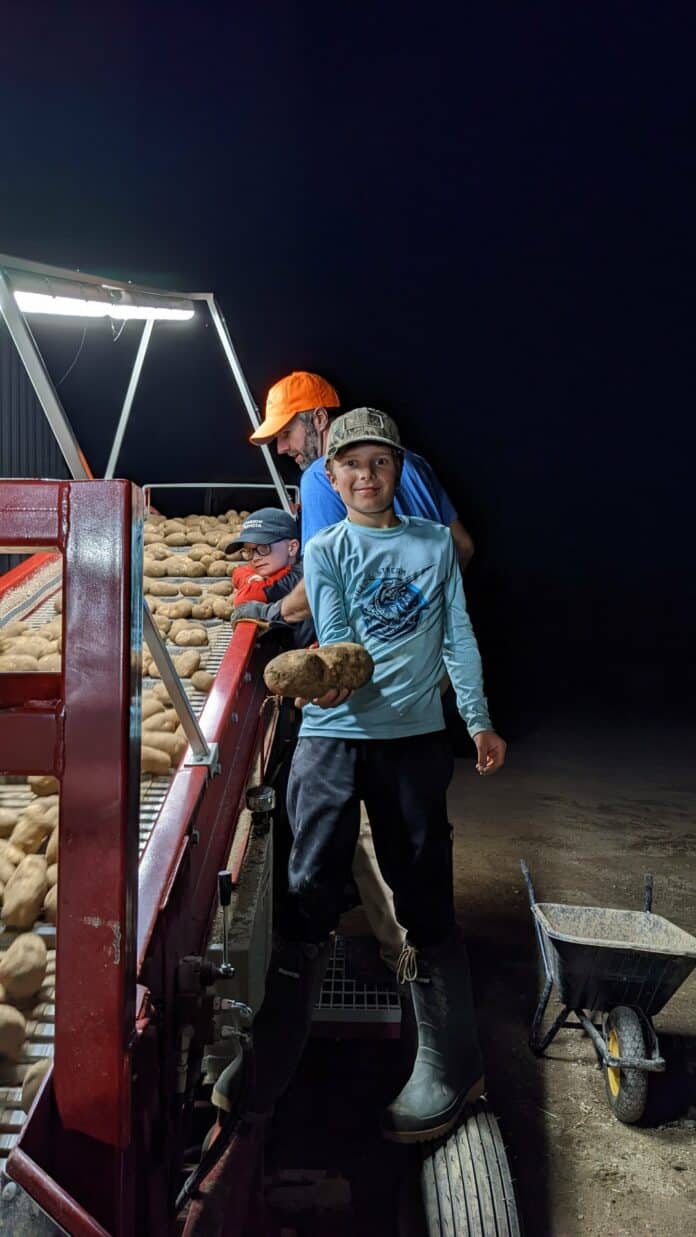At our potato farm in Bedell, N.B. we don’t have access to irrigation, so we depend on whatever we’re blessed to have fall from the sky to provide all the water our crops need to grow. However, there are things my father Randy and I have done in the past and will continue to do in the future to help Mother Nature do her job a bit better. Regenerative agriculture practices may be a relatively new term but not all the practices it includes are new to us. So, like many of our neighbours we use regen ag practices to support our soils and make sure they’re able to take in as much rain as possible when it falls.
Soil is what makes the difference when it comes to growing potatoes. If our dirt isn’t good, then it doesn’t matter what inputs we put on our plants or what Mother Nature does as the soil has a fixed threshold and won’t improve on its own. But when your soil is top notch then that it means it can take in all Mother Nature offers and feed it back to your spuds.
We had a couple of dry years a few years back, and we noticed a major reduction in our crop yield — we knew we had to start doing something a lot more aggressive to retain water. In the Maritimes we rely completely on Mother Nature for water. There’s very little irrigation in our area and lots of hills, so we must have some way of holding the water where it needs to be for the plants. The best way to do that is to build up our organic matter. You know how much water a straw bale will hold, if you leave it out in the rain for a month, you can hardly pick it up. So just imagine you apply that on acres and acres of land — it’s quite significant. Anything we can do to hold that water in and stop it from running off, helps our potatoes.
One of the rotational crops we grow is oats, and we’ve moved towards using vertical tillage with a max chisel on them instead of moldboard plows. We go in as soon as we dare after cutting our oats — we chop the oat straw up with the combine — and then integrate the chaff back into the soil using the max chisel. We’re doing it early enough in the summer that all the leftover oats and light oats sprout and grow in the field after they’re covered up with a little bit of soil by the chisel. This saves us from having to plant a cover crop keeping the field green until frost and then covering the soil all winter long. It saves us time and money compared to planting traditional cover crops.
We have also been planting sorghum sudangrass. This grows an immense amount of biomass in our soil. We cut it off with a rotor beater when the crop is two to three feet high, above the bottom node, it then resprouts driving growth into the roots creating a better tap root. It grows the roots deeper breaking up the soil and creating a bigger root mass making for a stronger plant producing more food for the soil.
We’ve been trying to build up our organic matter in our soil as much as we can. Soil tests have shown us some fields can handle more, so we keep working to build that organic matter up. Regular soil tests are an important part for any farm — you need to know what have there in your soil in order to know what it needs.
At the end of the day, all of this pays off and Mother Nature has blessed us with improved potato quality and yield boosts. When you have healthy soils and high organic matter it’s impressive how much the soil retains water. We know as our climate continues to change becoming less predictable than it was in my father and grandfather’s days, we must do all we can do help our soils be resilient for future generations. As a father of two young sons, I know we’re temporary stewards of the land trying to maintain and improve it for the next generation of farmers to come along and take the reins.









